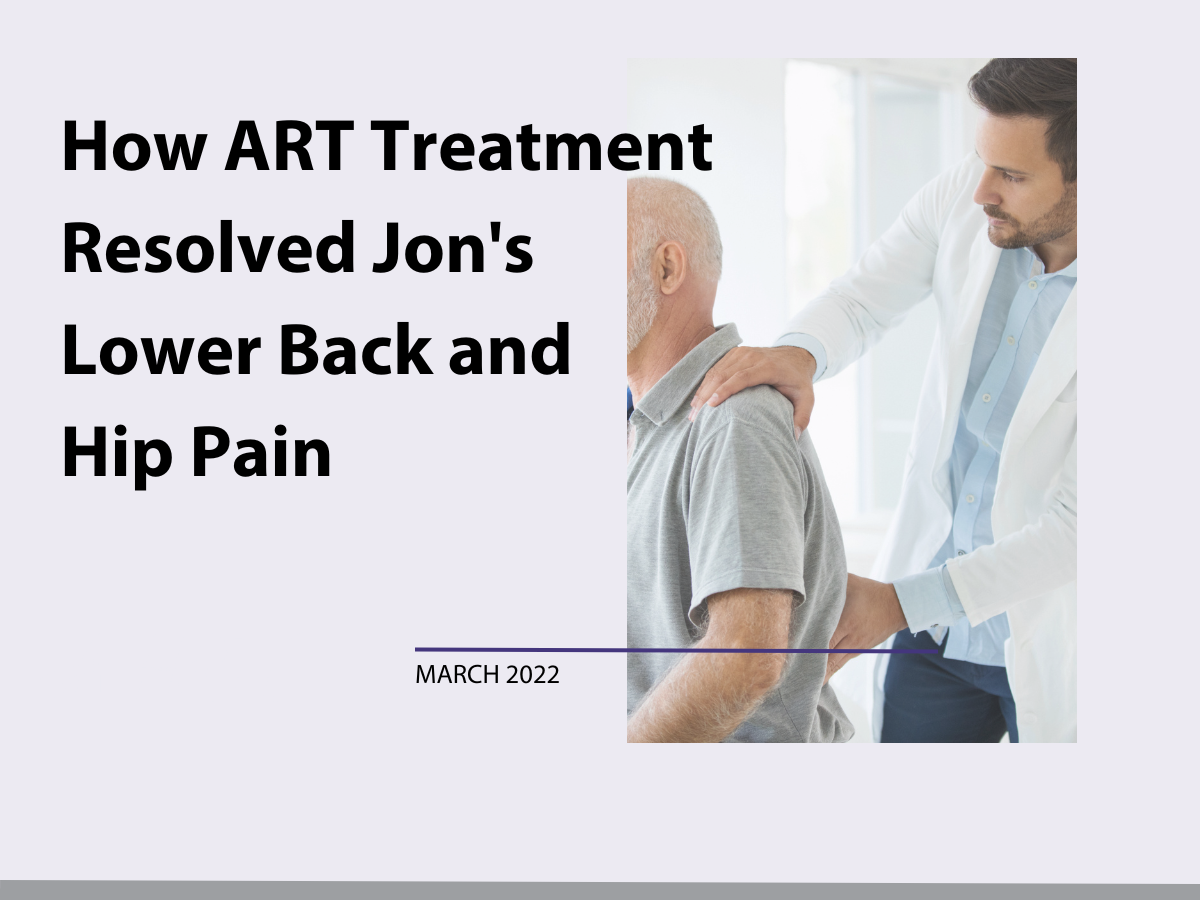Series of Skiing Injuries Treated with ART
As part of our Advanced Full Body Online seminars, we invite patients experiencing soft-tissue or nerve dysfunction to be treated by Dr. P. Michael Leahy. The goal of this segment is two-fold: help patients feel better faster with ART treatment and teach ART Certified Providers™ how to use ART treatment in a real, clinical setting.
The patient
Jon Malcolm was a part of ART’s Patient Case Studies in March 2022. He had long-time pain and decreased range of motion in his hips and lower back.
Jon’s unresolved injuries were a result of a couple of skiing and dirt bike accidents.
According to the University of Rochester School of Medicine and Dentistry, the most common skiing injuries include:
- ACL injuries
- Dislocated and fractured shoulders
- Shoulder separation injuries
- Fractures to the lower extremities
- Spinal injuries
- Wrist, hand, and thumb injuries
- Closed head injuries (no breaking to the skull)
The symptoms
Jon reported feeling a formed tightness and pain in his lower back and hip, which led to a decrease in his range of motion.
In the mornings, Jon often does hip stretches to release the tension that builds throughout the night while sleeping.
The stretches are a short-term relief but were not fixing the cause of his pain.
The treatment
ART Certified Providers™ follow a diagnostic process unique to Active Release Techniques® (ART®) treatment.
What is ART treatment?
ART treatment is a non-invasive system that treats soft-tissue and nerve dysfunction at the source. This hands-on treatment uses a combination of provider touch, depth, and tension with patient movement to pinpoint and treat the origin of the affected area.

A patient-friendly explanation of the ART Diagnostic Algorithm to explain the process of ART treatment.
Step 1: Find the source of pain.
Because Jon feels the most limitations from pain and tension when twisting his back, he performed that movement for Dr. Leahy.
After Jon twisted his body more than five times, Dr. Leahy could feel the tension in Jon’s abdomen and left hip.
Step 2: Feel for contributing sources.
Dr. Leahy felt the areas around Jon’s abdominal region and left hip to identify any other sources that are factoring into Jon’s pain.
There was a chain reaction happening as Jon moved. His left hip blocks the movement from a contributing source that tightens too soon in the process. Because of that, a region in his abdomen overcompensates by pulling.
This was causing damage to Jon’s L4 and L5, which are the two lowest vertebrae bones in the lower back.
Step 3: Treat the problem.
Dr. Leahy started by differentiating the tissues in Jon’s left hip while moving his leg to work through the restricted motion. The sacroiliac joint was resisting the forced movements, so Dr. Leahy used ART protocols to release the tissue.
A Hyperice Hypervolt was used with ART treatment to help soften the tissue and help with his ability to move during ART treatment.
The results
Through nearly 20 minutes of palpation, protocols, and repeating step one, Dr. Leahy successfully corrected Jon’s movement.
Want to witness the magic of ART treatment for yourself? Watch the full video on YouTube.
